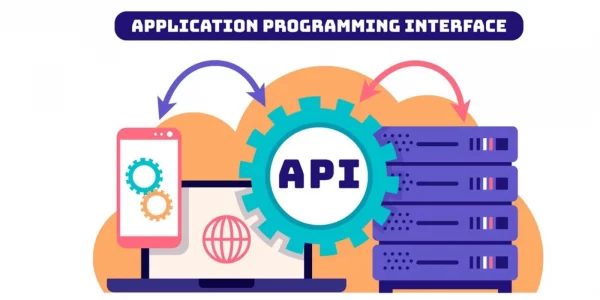In the vast landscape of modern technology, Application Programming Interfaces (APIs) serve as the lifeblood of connectivity and data exchange between various systems and platforms for API Uptime Analytics. As businesses and organizations increasingly rely on APIs to deliver services and information, the need for ensuring their uptime and reliability has become paramount.

This article delves into the world of API uptime analytics, shedding light on its importance and exploring the most common use cases where it plays a pivotal role.
Understanding API Uptime Analytics
Before we embark on this journey, let’s clarify what API uptime analytics entails. At its core, it’s the practice of monitoring and analyzing the availability and performance of APIs. This involves tracking how often an API is up and running, how quickly it responds to requests, and identifying potential issues that could disrupt its operation.
Why does API uptime monitoring matter? In an era where businesses operate 24/7 and customer expectations are sky-high, even a momentary API downtime can translate into lost revenue, damaged reputation, and frustrated users. Hence, ensuring that your APIs are consistently accessible and performing optimally is non-negotiable.
Now, let’s dive into the real-world scenarios where API uptime analytics shines. Whether you’re in e-commerce, finance, healthcare, mobile app development, or the realm of Internet of Things (IoT), there are common use cases that underscore the significance of API monitoring.
Use Case1: E-commerce Platforms
E-commerce platforms thrive on delivering seamless shopping experiences to customers. This involves a complex web of interactions between inventory management, payment processing, and user interfaces.
In the world of online shopping, every second counts. API uptime analytics ensures that product catalogs load swiftly, payment gateways remain operational, and the entire shopping journey flows smoothly.
E-commerce success hinges on maintaining accurate inventory levels. By monitoring APIs responsible for inventory data, businesses can prevent stockouts, overstocking, and ultimately, customer dissatisfaction.
Sales events and promotions can lead to a sudden surge in website traffic. API uptime monitoring helps e-commerce platforms scale their infrastructure on-demand to handle traffic spikes without a hitch.
Use Case 2: Financial Services
Financial institutions deal with sensitive transactions and regulatory requirements. API uptime analytics is a linchpin in this sector.
APIs drive financial transactions, from online banking to trading platforms. Ensuring these APIs are consistently available and responsive is imperative to prevent disruptions in financial services.
Sophisticated fraudsters are always lurking. Monitoring APIs for unusual patterns and discrepancies can be the first line of defense against fraudulent activities.
Financial organizations must adhere to strict regulations. API uptime analytics assists in keeping track of data security, audit trails, and compliance with industry standards.
Use Case 3: Healthcare Systems
Healthcare is undergoing a digital transformation, with APIs at the forefront of patient care and data exchange.
APIs enable the seamless sharing of patient data between healthcare providers. Monitoring these APIs ensures that critical medical information is always accessible when needed.
Especially relevant in recent times, telemedicine relies heavily on APIs for video consultations and remote patient monitoring. Reliable APIs are the foundation of virtual healthcare.
Healthcare APIs must adhere to the Health Insurance Portability and Accountability Act (HIPAA) guidelines. API uptime analytics helps maintain the privacy and security of patient information.
Use Case 4: Mobile Applications
Mobile apps are ubiquitous, and their success hinges on smooth performance and user engagement.
APIs power the backend of mobile apps. Monitoring their uptime and responsiveness directly impacts the app’s speed and reliability, enhancing the user experience.
API uptime analytics can track user interactions within the app, providing valuable insights into user behavior and preferences.
For apps that rely on real-time communication, such as messaging apps or news apps, API uptime is essential to deliver timely notifications and updates.
Use Case 5: Internet of Things (IoT)
The IoT landscape involves a multitude of connected devices that rely on APIs for data exchange and control.
In IoT, API uptime ensures that devices can communicate seamlessly, enabling smart homes, industrial automation, and more.
APIs play a pivotal role in streaming data from IoT devices to cloud platforms for analysis and decision-making. Uninterrupted data flow is critical.
API uptime analytics can predict when IoT devices need maintenance, reducing downtime and minimizing costly equipment failures.
To make use of it, you must first:
- Go to Uptimeapicloud and simply click on the button “Start monitoring with 30-day Free Trial” to start using the API.
- After signing up in Uptimeapicloud, you’ll be given your personal Trail. Click on the Monitors option.
- Click on the New Monitor button and add the API details with the API name and URL.
- Once you are done, make the API call by pressing the button “Create” and see the results on your screen.
Here’s the Example:
Conclusion
In today’s interconnected world, APIs are the conduits of digital innovation. API uptime analytics safeguards the reliability and performance of these critical connectors. We’ve explored common use cases across industries, but as technology evolves, so do the applications of API monitoring. To stay competitive and deliver superior user experiences, choosing the right API monitoring tools and practices is paramount. As we look ahead, the future promises even more exciting developments in the realm of API uptime analytics, driving the digital transformation forward.

